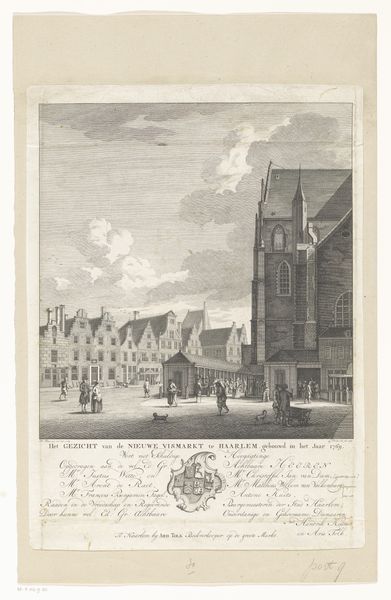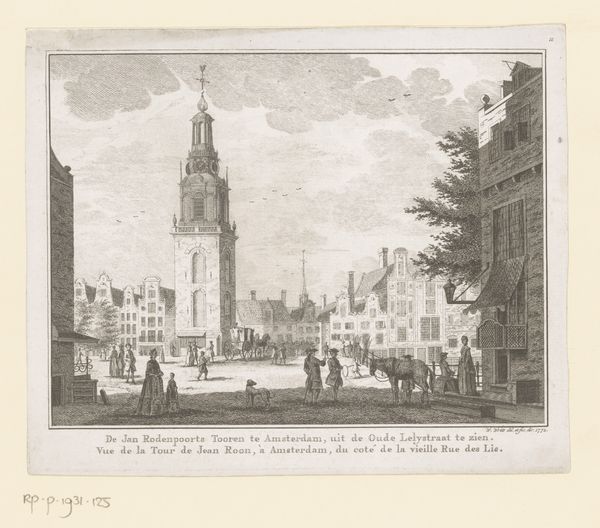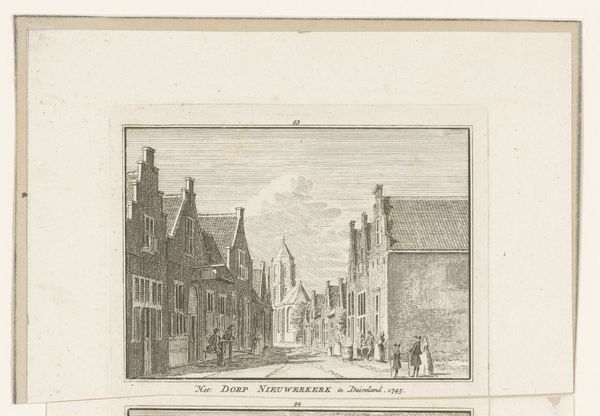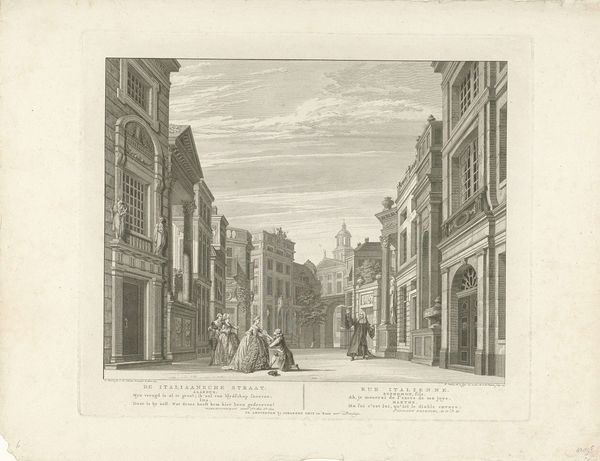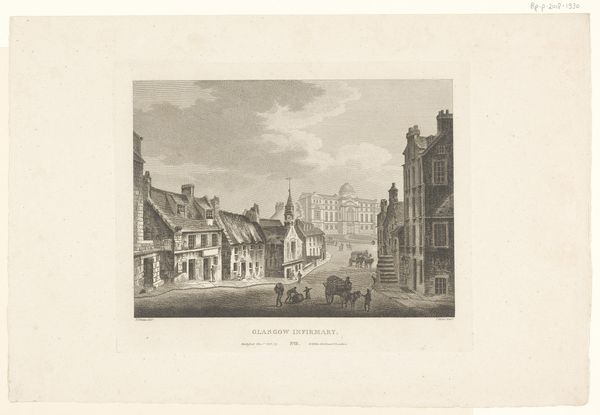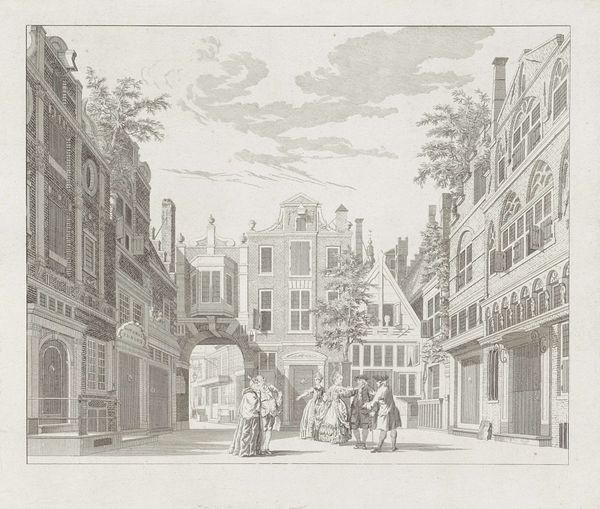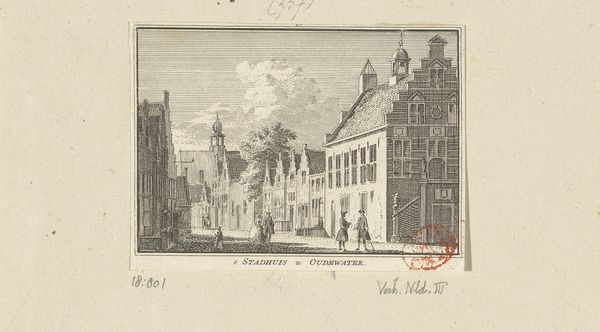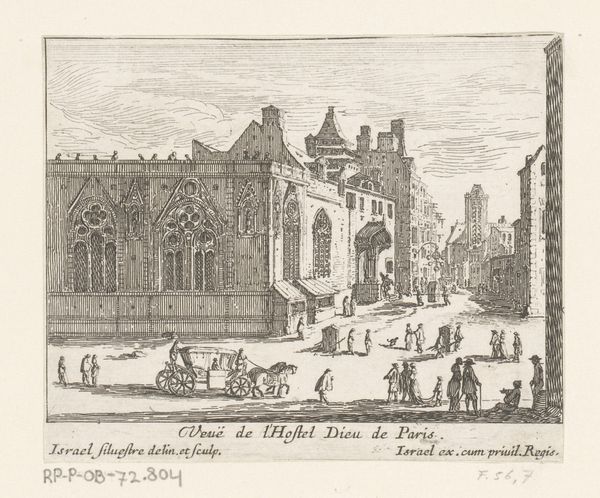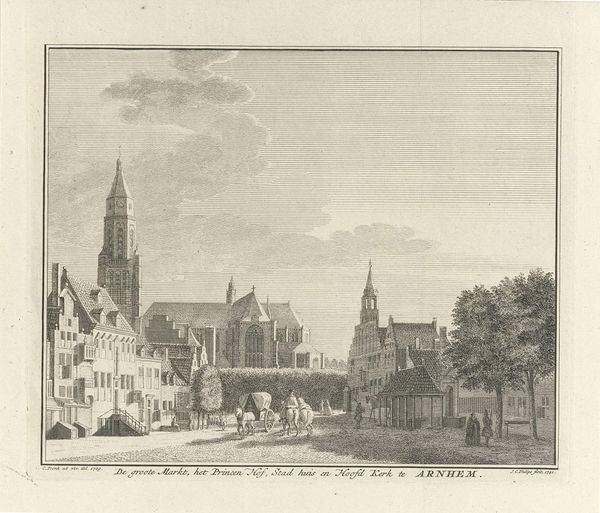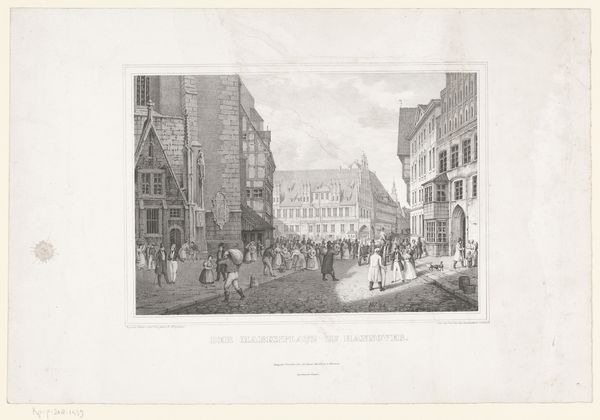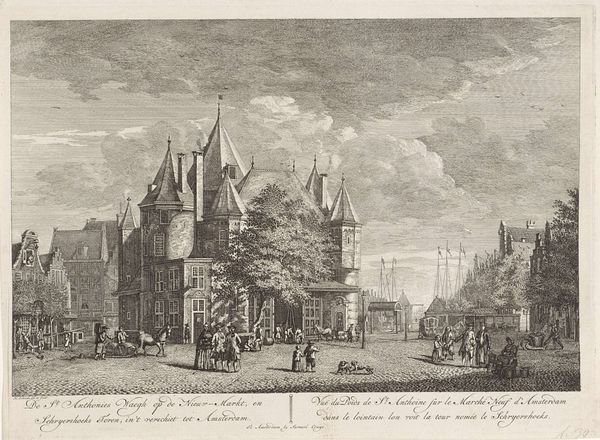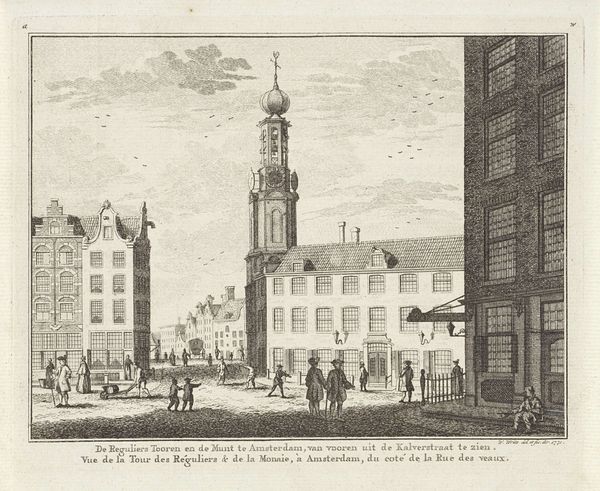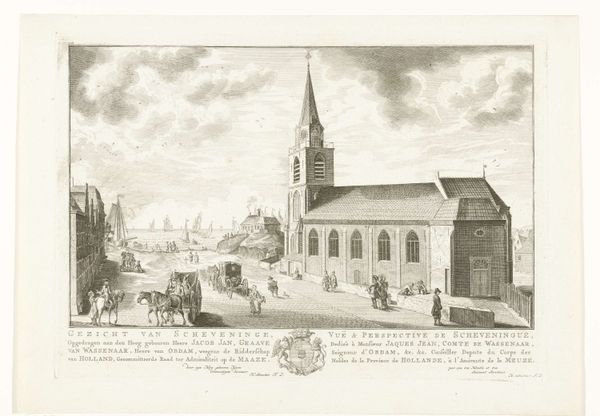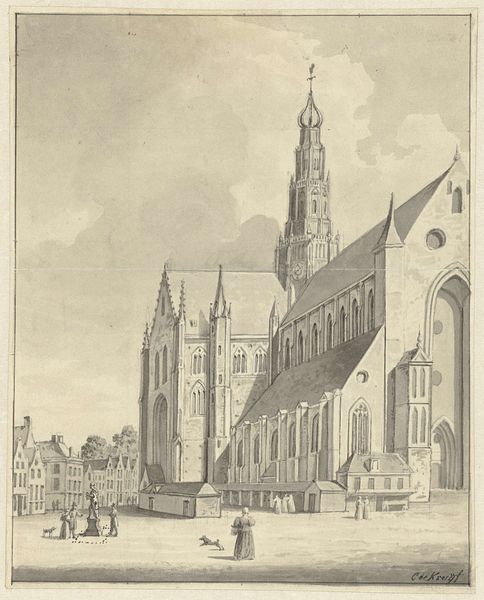
graphic-art, print, etching, engraving
#
graphic-art
#
dutch-golden-age
# print
#
etching
#
old engraving style
#
landscape
#
cityscape
#
engraving
Dimensions: height 428 mm, width 315 mm
Copyright: Rijks Museum: Open Domain
Curator: Before us is "View of the Old Fish Market in Haarlem," an etching created by Caspar Jacobsz. Philips in 1768. It resides, fittingly, in the Rijksmuseum collection. Editor: The striking tonal contrast of this Dutch Golden Age cityscape really pulls you in. The darkness of the church sharply contrasts the light that fills the marketplace. It definitely evokes a sense of bustling commercial activity. Curator: Precisely! Consider Haarlem in 1768 – a center of trade and civic life. This print offers a window into the daily lives of its inhabitants. Observe the figures populating the square: are they merchants, patrons, or are they simply people on their way somewhere? Their presence and their clothes contribute to a narrative about gender, class, and commerce. Editor: I agree. What stands out to me are the market stalls themselves. Etching allowed for precise replication of details like those canvas awnings, and the people seem actively engaged in some economic exchange. Look how the textures vary, stone compared to textiles. The choice of materials—copper plate, etching tools, the paper itself—reveal the hand of the artisan shaping perceptions of urban space. Curator: Absolutely, we can't overlook Philips' role in shaping perception! This etching provides a sense of ordered society – an idea important during the Dutch Enlightenment. Consider that Haarlem also bore witness to inequality and social struggles, and so this is also in many ways a performance. It invites reflection on urban experience through carefully constructed visual imagery, highlighting the ideal versus a potentially very different reality. Editor: The question of what to leave in, what to take out. It’s all part of how images reinforce a cultural or economic worldview. The choice of perspective and even what the weather looks like that day matters, doesn’t it? Looking closely at what is emphasized, it highlights the controlled production inherent in the Dutch art market. Curator: Looking at the legacy, one can ask: who has access to making history? Editor: That’s exactly where process connects to the broader political discourse, isn't it? The work reflects economic activity while also reflecting the values of the era. Curator: Well, the value here comes both from labor and insight into a historical microcosm. Editor: Definitely an efficient medium that tells a big story!
Comments
No comments
Be the first to comment and join the conversation on the ultimate creative platform.
